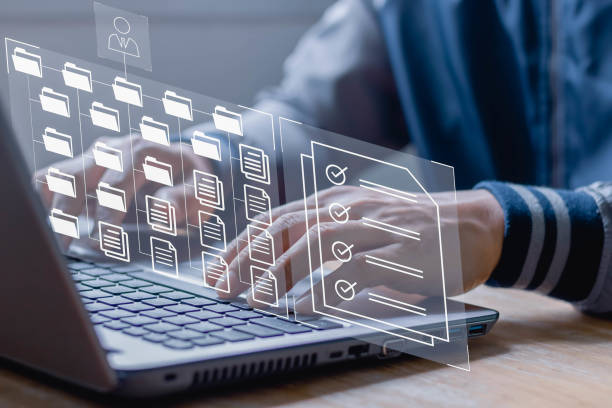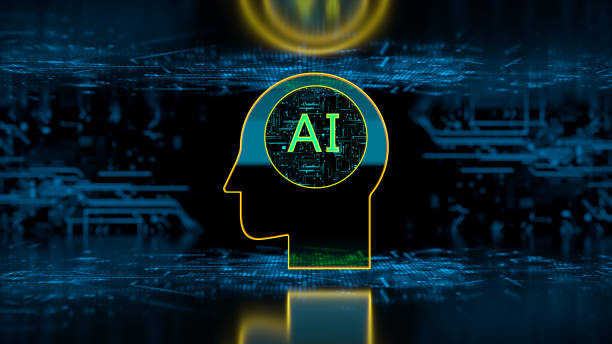Introduction and Definition of AI Robots
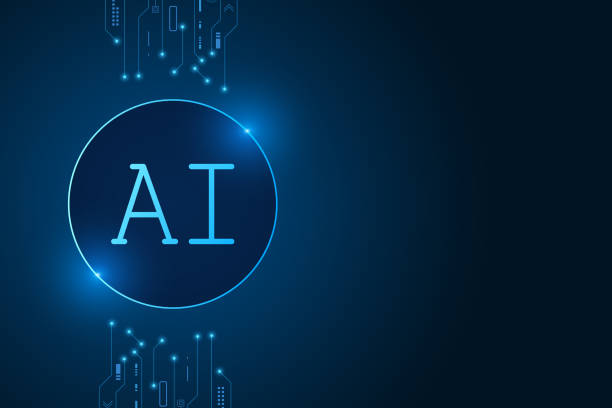
In today’s world, the term “Artificial Intelligence Robot” is rapidly entering our daily conversations and various aspects of our lives.
But what exactly is an #AI_robot? Simply put, an AI robot is a machine capable of understanding its environment, processing information, and performing tasks in a way that simulates human intelligence.
These machines can not only execute pre-programmed commands, but also have the ability to #learn from data and #experience, which distinguishes them from traditional robots.
From sensors for receiving environmental information to complex artificial intelligence algorithms for decision-making and finally actuators for performing physical actions, every component of an AI robot is designed with the ultimate goal of intelligent automation.
The evolution of these technologies has profound implications for the future of humanity, guiding us towards a new era of human-machine interactions.
Understanding this emerging phenomenon is vital for every individual in today’s society, as AI robots will soon become an inseparable part of our living and working infrastructure.
These robots are capable of performing complex and repetitive tasks with unparalleled accuracy and speed, and they hold immense potential for improving the quality of life and increasing productivity in various industries.
Did you know that your company’s website is the first point of contact for 75% of potential customers?
Your website is the face of your brand. With **Rasawb**’s corporate website design services, build an online presence that earns customer trust.
✅ Create a professional and lasting image of your brand
✅ Attract target customers and increase online credibility
⚡ Get a free consultation from **Rasawb** experts!
History and Evolution of AI Robots

The concept of the Artificial Intelligence Robot has deep roots in science fiction literature and humanity’s long-held aspirations to build autonomous beings.
From ancient Greek myths and the story of the Golem in Jewish culture to 18th-century mechanical automatons, the idea of intelligent machines has always fascinated human minds.
However, the true birth of the AI robot in its modern sense began with the advent of computers and early advancements in the field of artificial intelligence in the mid-20th century.
The 1950s and 60s saw the emergence of the first computer programs capable of solving simple problems and playing logical games.
Then, in the 70s and 80s, with the development of expert systems and industrial robots, robots entered an operational phase, although their intelligence was primarily based on pre-defined rules.
A major turning point occurred in the late 20th and early 21st centuries with significant advancements in machine learning and especially deep learning.
These advancements allowed robots to learn from vast amounts of data and acquire capabilities such as image recognition, natural language processing, and even decision-making in complex situations.
Today, we are witnessing a new generation of AI robots capable of acting more autonomously, interacting with humans, and even understanding or simulating emotions.
This evolution demonstrates the endless potential of this technology to change the face of the world and continues to progress rapidly.
Amazing Applications of Intelligent Robots
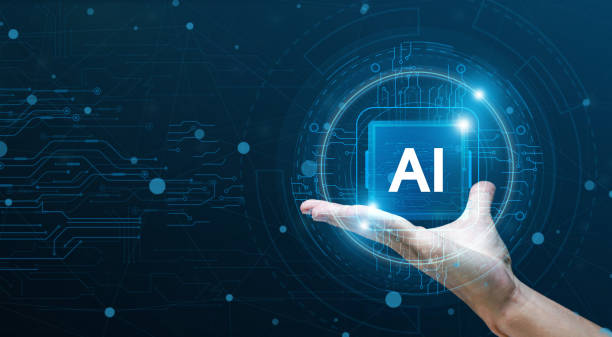
The range of Artificial Intelligence Robot applications today is so vast that imagining a world without them has become difficult.
In the health and medicine sector, surgical robots like DaVinci help surgeons perform complex operations with unparalleled precision, while service robots in hospitals transport medicines and equipment and even provide psychological support to lonely patients.
In industry and manufacturing, intelligent robots have optimized production lines and, by increasing speed and accuracy, have revolutionized productivity.
These robots are capable of taking on repetitive and dangerous tasks, increasing worker safety.
In transportation, self-driving cars and delivery drones have introduced new concepts of logistics and movement.
Even in daily life, smart vacuum cleaners, voice assistants, and domestic service robots are increasingly entering our homes and making daily chores easier.
The potential of intelligent machines in the education sector is also significant; from adaptive learning platforms that personalize content based on students’ needs to educational robots that can simulate learning interactions.
This diversity in applications shows that the Artificial Intelligence Robot is not just a tool, but a game-changer in all aspects of society, enabling us to achieve solutions that were previously unimaginable.
However, as applications expand, the need for a more thorough examination of ethical and social aspects also increases.
| Robot Name or Type | Main Application | Prominent Example |
|---|---|---|
| Industrial Robots (Robotic Arms) | Manufacturing and assembly in factories | Tesla car production line robots |
| Medical Robots (Surgery) | Assisting surgeons in precise operations | DaVinci robot in complex surgeries |
| Service Robots (Domestic and Public) | Performing daily tasks and assistance | Smart vacuum cleaners, hospitality robots in restaurants |
| Educational Robots (Assistant Robots) | Teaching, skill training, and academic support | AI-based adaptive learning platforms |
| Explorer and Discovery Robots | Searching in dangerous or remote environments | NASA Mars rovers (e.g., Perseverance) |
Challenges and Limitations of AI Robot Development
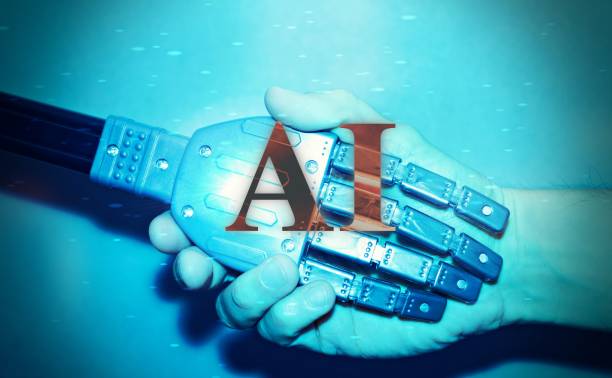
As the Artificial Intelligence Robot rapidly advances, we also face significant challenges and limitations that require serious attention and solutions.
One of the biggest concerns is ethical issues.
Should robots be capable of making ethical decisions in complex situations? How can we ensure that artificial intelligence algorithms are not biased and do not violate human rights? The issue of job displacement is also raised; with increased automation by intelligent robots, what will be the future of the human workforce? Can we create new job opportunities that compensate for lost jobs? From a technical perspective, AI robots are still very weak in understanding “common sense” and human capabilities such as creativity, empathy, and deep contextual understanding.
Human interactions are more complex than current algorithms can fully manage.
Also, cybersecurity is a significant challenge; how can AI robots be protected against cyber attacks that could lead to malfunction or misuse? These limitations indicate that the development of the Artificial Intelligence Robot is not just a technical issue, but a broader topic with social, ethical, and economic dimensions that requires interdisciplinary collaboration from various experts to ensure that this technology is used for the benefit of humanity and not against it.
Public discussions and awareness in this field are crucial for future decision-making.
Are your e-commerce website visitors leaving before purchasing? Don’t worry anymore! With Rasawb’s professional e-commerce website design services, solve the problem of not converting visitors into customers forever!
✅ Significantly increase conversion rate and sales
✅ Unparalleled and attractive user experience
⚡ Contact us now for a free consultation!
AI Robots and the Future of Jobs
The impact of the Artificial Intelligence Robot on the job market is one of today’s hottest and most complex debates.
On one hand, many are concerned that intelligent robots will replace human labor, especially in repetitive and rule-based jobs.
Analyses show that tasks such as assembly in factories, data entry, and even some customer services will gradually be performed by these advanced machines.
These concerns are real, and governments and companies must be prepared for structural changes in the job market.
But on the other hand, the emergence of Artificial Intelligence Robots also leads to the creation of new jobs.
The need for engineers to design and maintain these robots, data specialists to train algorithms, and ethics experts to ensure their responsible use, is increasing.
Jobs requiring creativity, complex problem-solving, critical thinking, and deep human interactions will be less affected and may even be strengthened by powerful artificial intelligence tools.
Therefore, the future of work with AI, is not necessarily about job loss, but rather about the transformation and changing nature of existing jobs.
Reskilling and upskilling the workforce to adapt to these changes, is vital.
Society must focus on developing soft skills and unique human capabilities to ensure the successful coexistence of humans and artificial intelligence systems in the future.
The Role of AI Robots in Education and Learning
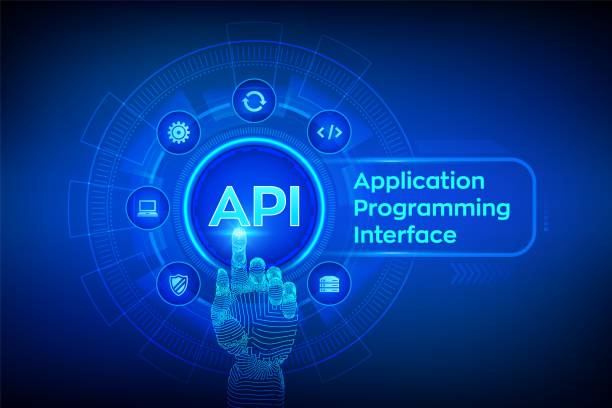
In the field of education, the Artificial Intelligence Robot has immense potential to transform learning and teaching processes.
Education is no longer limited to traditional classrooms; AI-powered adaptive learning platforms personalize educational content based on each student’s learning pace and style.
This means providing more challenging materials for bright students and more support for those who need extra help.
AI assistant robots can act as virtual private tutors, answer students’ questions, check assignments, and even provide instant and constructive feedback.
This reduces teachers’ workload and allows them to focus more on personal interactions and fostering critical thinking skills.
Also, AI robots can play an effective role in foreign language education, scientific simulations, and even performance-based assessments.
This technology can also provide access to quality education in remote areas or for individuals who, for various reasons, are unable to attend traditional educational environments.
Despite all the advantages, it is important that the role of intelligent machines in education is considered supplementary to the teacher’s role and not a replacement.
Human interaction and the development of social skills will remain vital parts of the learning process.
This vision promises a future where education will be far more personalized and efficient, helping students reach their full potential.
AI Robots in Industry and Manufacturing
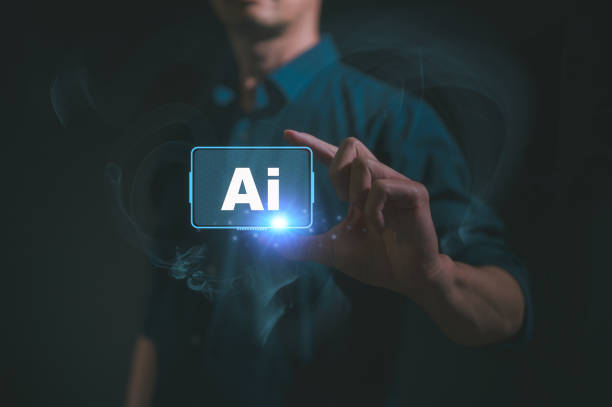
Industry and manufacturing have always been at the forefront of adopting new technologies to increase efficiency and reduce costs.
Today, the Artificial Intelligence Robot has become the backbone of Industry 4.0, where factories are transforming into “smart factories”.
These advanced robots are capable of performing manufacturing operations with unparalleled precision and speed, from complex assembly of small parts to welding and painting on a large scale.
One of the key advantages of using AI systems in industry is their ability to learn and adapt to changes.
They can identify production defects and adjust themselves to improve quality, or even detect the need for predictive maintenance in case of machine failure.
These capabilities mean reduced production line downtime and a significant increase in productivity.
In addition, intelligent robots can operate in dangerous environments or perform tasks that are tiring or harmful to humans, which greatly contributes to increasing worker safety.
From warehouse inventory management with automated robots to optimizing the supply chain with artificial intelligence algorithms, the presence of this technology is evident in all stages of production.
This transformation not only leads to the production of higher quality and cheaper products, but also moves towards more sustainable production by creating factories that are less dependent on energy resources.
The future of industry will undoubtedly be shaped by the greater presence of AI robots.
| Aspect | Advantages | Challenges |
|---|---|---|
| Productivity and Efficiency | Increased speed, accuracy, and production volume; reduced downtime | High initial investment needed; complexity in implementation |
| Product Quality | Reduced errors and defects; improved standardization | Need for quality data to train robots |
| Workplace Safety | Dangerous and repetitive tasks performed by robots | Cybersecurity risks; need for new safety protocols |
| Flexibility | Ability to adapt to changes in production lines and products | Need for specialized programming and maintenance |
| Economy and Cost | Reduced long-term operational costs; optimized energy consumption | Costs of system maintenance and upgrades |
Security and Privacy in the Age of AI Robots
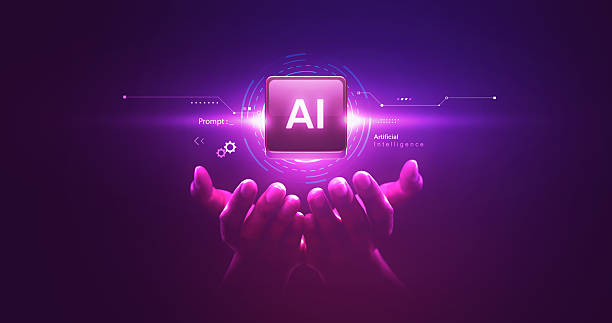
With the increasing penetration of Artificial Intelligence Robots into daily life and critical industries, concerns about cybersecurity and data privacy have significantly increased.
Intelligent robots often deal with vast amounts of personal and sensitive information, from medical data in hospitals to financial information in banking systems.
Any security breach in these systems could lead to major catastrophes, from identity theft to manipulation of vital information.
Therefore, protecting AI infrastructures against cyber attacks is an unquestionable priority.
This includes ensuring the security of algorithms against manipulation, protection of training data from leaks, and securing communications between robots and central systems.
Furthermore, the issue of privacy arises.
AI robots that operate in homes or public environments may collect sensitive information.
How can we ensure that this data is collected, stored, and used responsibly? The need for enacting strict laws and regulations regarding data protection and transparency in the operation of AI robots is felt more than ever.
This assurance of security and privacy is essential for gaining public trust in this technology and its wider adoption.
Without these measures, the immense potential of intelligent robotics to improve life may never be fully realized due to security and ethical concerns.
Are you tired of losing business opportunities due to not having a professional corporate website?
Rasawb, with professional corporate website design, helps you:
✅ Build a powerful and reliable image for your brand
✅ Convert website visitors into loyal customers
⚡ Get a free consultation now!
How to Interact with an AI Robot
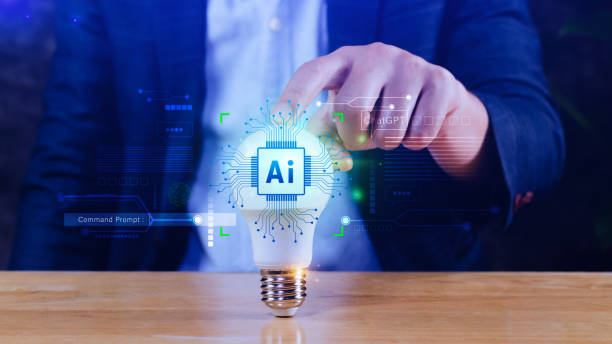
Interacting with an Artificial Intelligence Robot is no longer a science fiction concept, but a part of our daily reality.
From voice assistants on smartphones to customer support chatbots, learning how to effectively interact with these systems has become increasingly important.
The first step in this interaction is understanding their capabilities and limitations.
Robots, however intelligent, are still machines that operate based on data and algorithms and lack human understanding or common sense.
Therefore, clear and precise communication with them is essential.
Using simple language, explicit commands, and avoiding ambiguity can help the robot better understand your request.
If a robot cannot understand your request, try stating it in a different way or with more details.
Setting realistic expectations is also important; an AI robot cannot perform miracles or understand complex human emotions, but it can be incredibly useful in performing specific tasks.
Also, providing feedback to developers through the user interface helps improve the robot’s performance.
This feedback helps train algorithms and fix bugs.
Finally, awareness of ethical issues related to interacting with an AI system, such as data privacy, is also an important part of this process.
By following these tips, we can have a better user experience with advanced intelligent robots and utilize their benefits to the fullest.
Future Outlook of Intelligent Robots
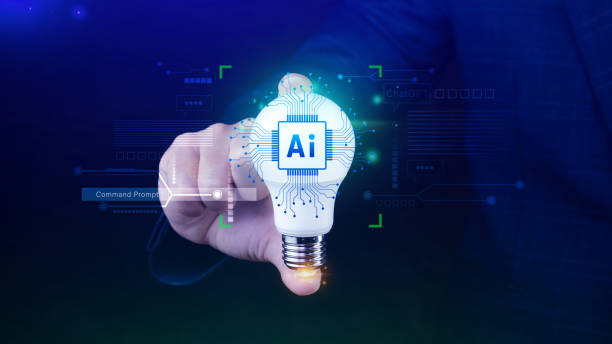
The future of the Artificial Intelligence Robot is bright and full of countless potentials.
Advancements in Artificial General Intelligence (AGI), which would enable robots to master any human intellectual task, is an exciting yet challenging prospect.
We are on the verge of an era where intelligent robots will not only perform tasks, but will be capable of creativity, independent problem-solving, and even expressing emotions.
Human-robot collaboration (Cobots) will increasingly expand, such that robots will work alongside humans as assistants and colleagues, rather than merely replacing them.
This could lead to unprecedented productivity increases across all industries.
Additionally, advancements in smart materials and biomimicry (imitating nature), will bring about robots that are softer, more flexible, and capable of interacting with more complex environments with advanced sensors.
Imagine AI robots that can detect diseases in early stages, help the elderly live independently, or even help solve global crises such as climate change and resource scarcity.
This future requires massive investments in research and development, international collaborations, and most importantly, the development of robust ethical and legal frameworks to ensure that this powerful technology is utilized for the benefit of all humanity and leads to a more just and sustainable world.
The vision of AI robots allows us to think bigger dreams and push the boundaries of what is possible.
Frequently Asked Questions
| Row | Question | Answer |
|---|---|---|
| 1 | What is an AI robot? | An AI robot is a machine capable of understanding, reasoning, learning, and problem-solving, and can perform complex tasks with relative autonomy. |
| 2 | What are the most important applications of AI robots? | Key applications include industrial manufacturing, customer services (chatbots), medicine and surgery, autonomous transportation, space exploration, and military affairs. |
| 3 | What is the main difference between an AI robot and a regular robot? | A regular robot only follows pre-programmed instructions, while an AI robot can learn from data, make decisions, and adapt itself to new environments. |
| 4 | How do AI robots learn? | They learn through machine learning algorithms (such as deep learning, reinforcement learning) and by processing vast amounts of data, identifying patterns, and improving their performance. |
| 5 | Can AI robots have emotions? | Currently, AI robots do not have real emotions in the human sense. They can imitate or detect emotions, but they do not understand or experience them. |
| 6 | What are the current limitations of AI robots? | Limitations include the need for large amounts of data, inability to understand abstract concepts, lack of true creativity, ethical issues, and generalization challenges in new environments. |
| 7 | What is the role of AI in the development of Humanoid robots? | AI helps humanoid robots to walk, maintain balance, understand their surroundings, interact with humans, and perform complex tasks. |
| 8 | How is the future of AI robots predicted? | It is predicted that AI robots will become smarter, more autonomous, and capable of performing more complex tasks in daily life and industry, and their interaction with humans will increase. |
| 9 | Can AI robots replace all human jobs? | It is unlikely that all human jobs will be replaced. Robots will take over many repetitive and dangerous tasks, but jobs requiring creativity, empathy, and ethical judgment will remain. |
| 10 | What ethical and social challenges arise with the expansion of AI robots? | Challenges include issues related to privacy, data security, ethical decision-making by robots, impact on employment, and accountability in case of errors. |
And other services of Rasawb Advertising Agency in the field of advertising
Smart Digital Branding: Revolutionize campaign management by optimizing key landing pages.
Smart SEO: An innovative service to increase website traffic through SEO-driven content strategy.
Smart Brand Identity: A combination of creativity and technology to increase click-through rates by customizing user experience.
Smart Digital Advertising: A creative platform to improve digital branding with precise audience targeting.
Smart Brand Identity: A professional solution for digital branding with a focus on attractive user interface design.
And over hundreds of other services in the field of internet advertising, advertising consultation, and organizational solutions
Internet Advertising | Advertising Strategy | Advertorials
? For your business to soar in the digital world, Rasawb Afarin Digital Marketing Agency, with expertise in SEO, online advertising, and user-friendly website design, is by your side to ensure a powerful and lasting presence.
📍 Tehran, Mirdamad Street, next to Bank Markazi, Kazeroun Jonoubi Alley, Ramin Alley, No. 6
References
AI Robots and the Future
Robotics and AI Advancements
Artificial Intelligence and Modern Life
AI Robot as a Companion


